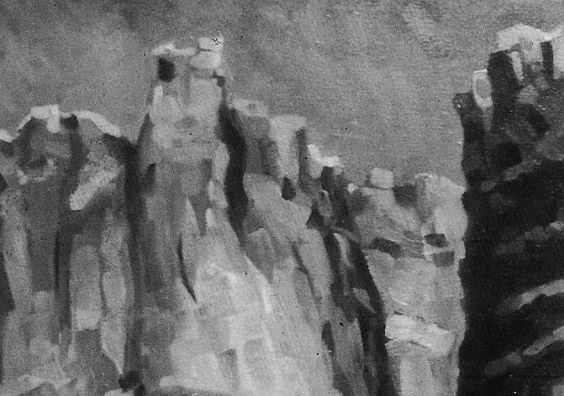Articles/Essays – Volume 30, No. 1
Millennium Approaches: An Introduction to New Mormon Scholarship
We borrow the title for this issue of Dialogue: A Journal of Mormon Thought from Tony Kushner’s Pulitzer Prize-winning play, Angels in America, Part One: Millennium Approaches. In this play Harper Pitt, an agoraphobic Mormon woman married to a gay Mormon man, presents her Valium-induced vision of what the Millennium may bring:
Maybe Christ will come again. Maybe seeds will be planted, maybe there’ll be harvests then, maybe early figs to eat, maybe new life, maybe fresh blood, maybe companionship and love and protection, safety from what’s outside, maybe the door will hold, or maybe .. . maybe the troubles will come, and the end will come, and the sky will collapse and there will be terrible rains and showers of poison light, or maybe my life is really fine … or maybe not, maybe it’s even worse than I know, maybe … I want to know, maybe I don’t.
And maybe we will never know what the end of the world looks like. De constructionists tell us that the end is unknowable, that community is impossible, except when thought of as a possibility. But we knew that already—we who were raised Mormon as the Cold War waned, Cleon Skousen on the bookshelf, Apocalypse Now at the movie house, Saturday’s Warrior songs on the eight-track.
Millennium Approaches. Our sense of new Mormon scholarship’s simultaneous emergence and divergence led us to choose this title. In the months since, we’ve reflected on the phrase’s particular personal significance. Our exchanges have sounded like this:
My second grade girlfriend moved to Jackson County, Missouri, in preparation for the Second Coming. They moved back to Arizona when I was in high school. They now live in Manti, Utah, waiting for the Second Coming again. My best friend was convinced, at age seven, that the Second Coming would arrive on 616176 at 6:06 a.m. When the hour arrived, he hid under his bed.
I grew up a few miles away from two major military bases in South ern California. This was a good thing, my mother explained, because we would get vaporized immediately if the Russians dropped the bomb. There was this relentless sense of readiness—storing fifty-pound cans of wheat, learning how to tie off an artery in Campcrafter first-aid training, getting walkie-talkies for the ward’s emergency preparedness plan.
My family was a little more rational, although we did pray every day for the missionaries to get into Israel and Russia, because the Second Coming couldn’t happen until then. My grandpa, who owned a hardware store, was told in his patriarchal blessing that he would help provide supplies to build the New Jerusalem.
My grandpa, who converted shortly before he died, collected books on the impending financial crash. During the Watts Riots, Grandpa and his friends prepared to take an armed last stand at the bridge over the San Gabriel River which separated his white working-class community, Downey, from Compton, in case the burning spread. After he died, we found a semi-automatic machine gun (disassembled, in its package) under a bathroom sink in his house.
We were raised to expect the Second Coming by the year 2000. What does it mean, then, for kids who stored water in old plastic milk jugs, who sang “I Won der When He Comes Again,” to seek graduate degrees in “the wisdom of the world”? What does it say about faith when choice spirits, saved for the later latter days, become humanists and professors, clothed in the robes of a false priest hood?
When the academy starts getting to me, when my colleagues seem a little too secure in their version of “reason” or “truth,” I look them square in the face and tell them about the lost tribes under the north pole and the continents coming back together. Bigfoot is Cain. If they think I’m joking, I take them to my car, open the trunk, and show them the two 72-hour kits my mother gave me.
***
Doomsday deadlines are nothing new; our generation, however, has seen more of them expire than any other. In the meantime mainstream Mormon leaders seem to have bracketed the idea of an incipient second coming and turned their attention to the demands of a world church. Our culture now produces far more full-time missionaries than frontier survivalists. Which leads us to make this prediction: the twenty-first century, for Mormons, will be about confronting Mormon pluralism. By the end of the next millennium (even if that end comes early), we will likely have the culturally entrenched diversity that world religions like Judaism or Catholicism already have. Perhaps someday one could claim a Mormon identity without having that signify religio-political orthodoxy.
Certainly the range of voices recorded in this special issue speak to an emergent pluralism in “Mormon thought.” Our authors—graduate students at universities across the country some solicited and some responding to national calls for papers—represent a range of disciplinary theoretical, and political orientations. They call themselves “Mormo Americans,” “post-Mormons,” “Jack Mormons,” and Saints. They are in terested in Mormonism’s intersections with larger cultures and with cultural divergences within the faith. (They do not yet, however, speak from Mormonism’s still silent subaltern majority—the 5 million church members who live outside the United States.) What they do have in common, we think, are the intellectual customs of our long-deferred era: a suspicion of last stands, a necessary pragmatism, a sense of the weight of genealogy. We inherit a lot of debt, we who start our adult lives at the end of a millennium, exhausted. What’s left, post-everything? Readers can look forward, in this issue, which marks the thirtieth anniversary of this journal’s founding by a previous generation of Mormon graduate students, to writing which resonates with a sense of humor, a hunger for coherence, and a still not-disproven faith in greater things to come.


 Back to full Issue
Back to full Issue

